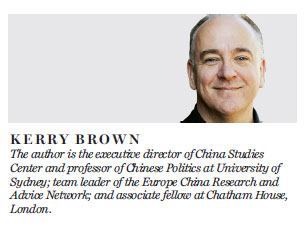Mainland can learn from HK in struggle against corruption
Updated: 2015-10-12 08:00
By Kerry Brown(HK Edition)
|
|||||||||
Much attention has been paid to the fight against corruption on the mainland over the last two-and-a-half years. A significant number of officials have been removed, investigated and, in many cases, handed to the criminal courts to be charged and sentenced.
Hong Kong's own struggle against graft and official malfeasance is one of its greatest success stories. And while the Central Commission for Discipline Inspection (CCDI) of the Communist Party of China (CPC) is institutionally a different entity to Hong Kong's Independent Commission Against Corruption (ICAC), there are ways in which the ICAC, through its work since its inception in 1974, can offer valuable ideas and precedents to the mainland's anti-corruption watchdog.
The work of the ICAC had its origins in public anger at widespread abuses of power by police, officials and government workers in the 1960s and 1970s when the city was still a developing economy. At that time, it lacked a common acceptance of what was acceptable and unacceptable behavior for public servants. One of the most famous cases was that of the chief superintendent of the Royal Hong Kong Police, Peter Godber, who had enjoyed a distinguished career, playing a leading role in calming the city down after the 1967 riots and receiving commendations for his work.
Godber, however, was operating an extensive bribes payment system, something which is documented in meticulous records he kept of illicit payments he received from businesspeople and which are kept on public display to this day at the ICAC headquarters in North Point. After he was exposed, Godber fled to his native UK before later being extradited to Hong Kong, tried and jailed for four years in 1975.
This case necessitated some efforts by the Hong Kong government to set up a credible body that could hold officials and public servants to account. In its official information material, the ICAC goes to some lengths to stress that its work in this area is a continuous struggle. Graft can never be fully eradicated. Temptation is always available for even the highest members of the government, as the case of former chief secretary for administration Rafael Hui Si-yan has shown. Hui was convicted late last year on corruption charges and is now serving a seven-and-a-half-year sentence.
This continuous and never-ending struggle against corruption is something that is echoed in Beijing in the work of the CCDI. While many outside have talked of the current fight being a "campaign", implying some kind of time limit, the most senior officials involved in fighting graft up to the level of CPC Political Bureau Standing Committee member Wang Qishan have gone out of their way to stress that time limits are not part of the plan. The anti-corruption drive has to be internalized as part of the culture and moral code of officials across the country. The problem with clampdowns and strike-hard campaigns, as implemented in the past, was that many officials just had to keep their heads low and bide their time, assuming that the situation would relax after a while and they could continue their life as usual.
The difference now is that the levels of wealth on the mainland are fast matching those of Hong Kong in the early 1970s. And like in Hong Kong back then, having government officials who are part of the problem rather than providing solutions - in terms of fulfilling their administrative functions while not creating public antagonism and erosion of confidence by abusing their positions - has also become politically contentious.
The ICAC's complete independence from the government was its great strength when it was founded, and something that gives it continuing credibility today - so much so that Hong Kong continues to perform well in terms of assessing how free the city is from corruption. The anti-graft body is not run by officials and civil servants, and this means it can investigate and explore cases with a high degree of autonomy and latitude. Even so, the ICAC would be the first to admit that its current ranking at around 18 globally in the Transparency International audit could be improved.
It is hard to imagine Hong Kong maintaining the integrity of its finance sector in the ways it has over the last four decades without the ICAC, largely because this body has been able to set clear divisions between the business and political worlds, and maintain a clear code in the ways that entrepreneurs are able to relate to government officials without being seen to solicit unfair benefits or help for their personal interests.
There is one clear lesson the ICAC can offer to Beijing and which, with the establishment two years ago of a whistleblower Internet platform, the CCDI seems to be taking - that is, recruiting the public into its work, getting their support and alliance, and explaining clearly to them what it does and why it needs their help to be effective. The public education campaigns in schools, businesses and other forums that the ICAC undertakes, and the ways in which it works internationally with other partners, makes it amongst the most respected and best known of Hong Kong's public institutions. In this way, the ICAC is a key component of the city's brand, and one highly relevant to events that are unfolding in Beijing.

(HK Edition 10/12/2015 page9)